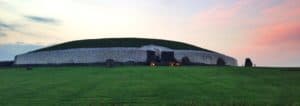Exploring Bosphorus: Best Jewel of Istanbul and Bridge of Worlds
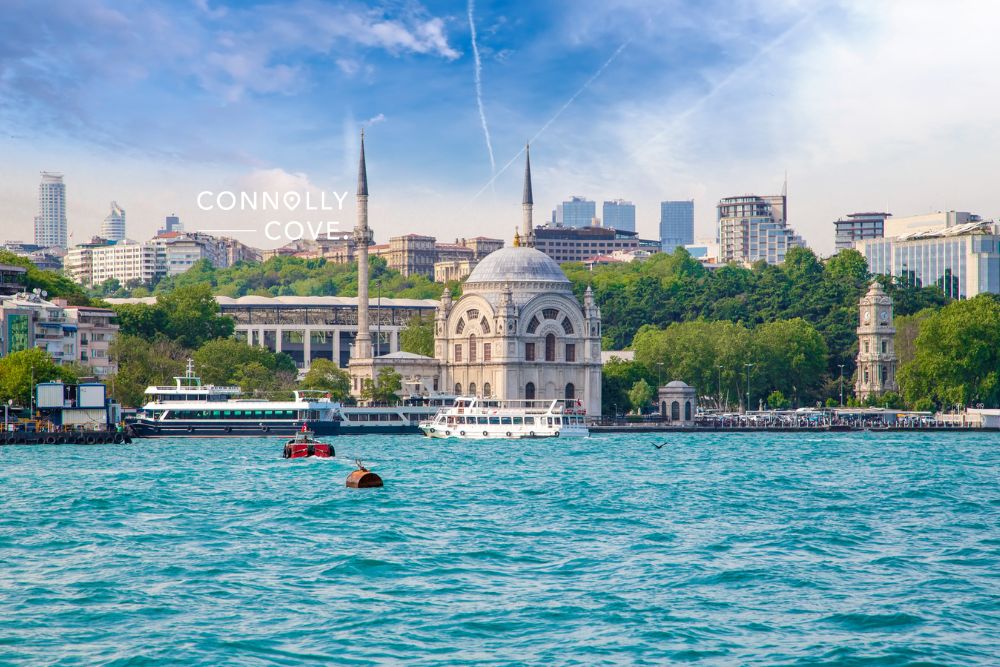
Updated On: February 15, 2024 by Fatma Mohamed
Imagine a vibrant city straddling two continents, Europe and Asia, with a shimmering waterway snaking through its heart. That’s the magic of the Bosphorus in Türkiye, a natural strait pulsating with life, history, and breathtaking beauty.
The Bosphorus is the soul of Istanbul. Locals and tourists flock to its shores, soaking up the sunshine, sipping fragrant Turkish tea in charming cafes, and capturing the unforgettable vistas on camera. Bosphorus cruises are a must-do, providing a unique perspective of the city and its impressive landmarks.
So, whether you are a history buff, a nature lover, or simply seeking an unforgettable experience, the Bosphorus in Türkiye awaits. Come, dip your toes into its magic and discover where East meets West, sea meets city, and every moment is an adventure.
Table of Contents

Overview of the Bosphorus in Türkiye
The Bosphorus Strait, located in northwestern Türkiye, bridges the Black Sea to the Sea of Marmara. This strategically vital waterway serves as a natural passage for trade and transportation between Europe and Asia. This natural wonder, also known as Istanbul Strait, divides the city’s European and Asian shores.
For millennia, this incredible strait has pulsated with the rhythm of global trade. Its strategic location has witnessed empires rise and fall, from the Byzantines controlling its access to the Ottomans building opulent palaces along its banks.
In this section, we will delve into the importance of this incredible waterway and learn more about its features.
A Strait in Numbers: Unpacking the Bosphorus’s Length and Width
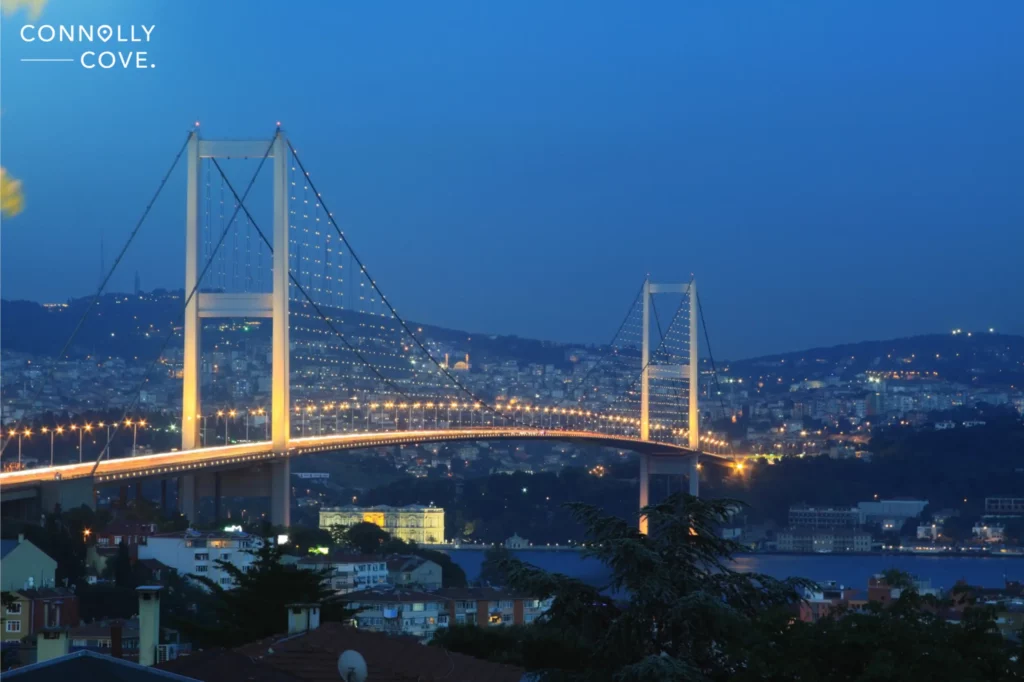
This iconic waterway is approximately 31 kilometres (19 miles) long from its northern entrance at the Black Sea to its southern entrance at the Sea of Marmara. This awesome waterway is not uniform in width; it varies between 730-3300 meters.
So, the Bosphorus is more like a winding waterway than a straight channel, offering breathtaking scenery with constantly changing vistas as you cruise along its shores.
A Name Steeped in History
This captivating waterway’s name is no accident. It comes from ancient Greek, a combination of “bous” (ox) and “poros” (passage). Legend attributes it to Io, a mythical princess transformed into a cow. Exhausted from wandering, she crossed the strait here, earning the nickname “Ox-ford.”
In Turkish the Bosphorus is called Boğaziçi or İstanbul Boğaziçi. The name Boğaziçi literally means “the Inner Strait”. The name İstanbul Boğaziçi is more specific, as it identifies the strait as being located in the city of İstanbul.
The Bosphorus Importance
This extraordinary strait isn’t just a pretty waterway. It’s a strategic chokepoint, a historical crossroads, and a vibrant ecosystem all rolled into one.
- Global Trade Hub: This 19-mile passage connects the Black Sea with global shipping routes, making it crucial for transporting oil, grain, and manufactured goods between Europe and Asia. Over 48,000 ships navigate its waters annually, underscoring its economic importance.
- Cradle of Empires: For centuries, empires have vied for control of this strait, recognising its power to influence trade and military movements. From the Byzantines to the Ottomans, history unfolds along its banks, evident in iconic landmarks like Topkapi Palace and Rumelihisarı Fortress.
- Ecological Gem: Beneath the sparkling surface, a thriving ecosystem pulsates. Dolphins frolic in the current, colourful fish dart through kelp forests, and migratory birds grace the skies. This famous water passage is a vital habitat for diverse marine life.
The Bosphorus is more than just statistics and history. It’s a canvas for breathtaking sunsets, a backdrop for bustling bazaars and charming cafes, and a playground for kayakers and fishermen. It’s a place where you can soak in Istanbul’s vibrant energy while marvelling at nature’s wonders.
Iconic Landmarks Along the Bosphorus
The Bosphorus is adorned with iconic landmarks that stand as testaments to its historical importance. Notable structures, such as the Hagia Sophia and the Topkapi Palace, reflect the cultural and architectural heritage shaped by this fabulous waterway over centuries. These landmarks not only serve as tourist attractions but also encapsulate the historical layers embedded in this strait’s identity, making it a living testament to the legacy of the civilisations it has connected.
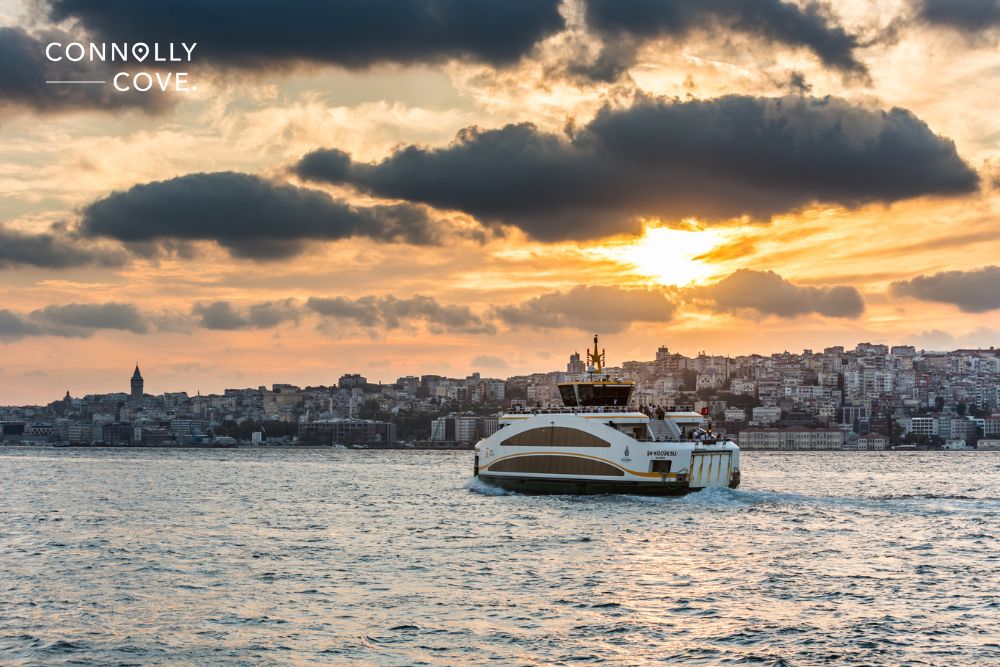
Cultural Aspects of the Bosphorus in Turkish Literature and Art
The Bosphorus is prominent in Turkish cultural expression, influencing literature, art, and folklore. Turkish writers have often drawn inspiration from the scenic beauty and historical significance of this watery gem in their literary works. Similarly, artists have captured its essence on canvas, depicting the strait’s unique blend of natural and urban landscapes.
If you are a Turkish series fan, you may notice that most Turkish series have used it as a filming location due to its natural beauty, which is reflected in the scenes and shots for any work.
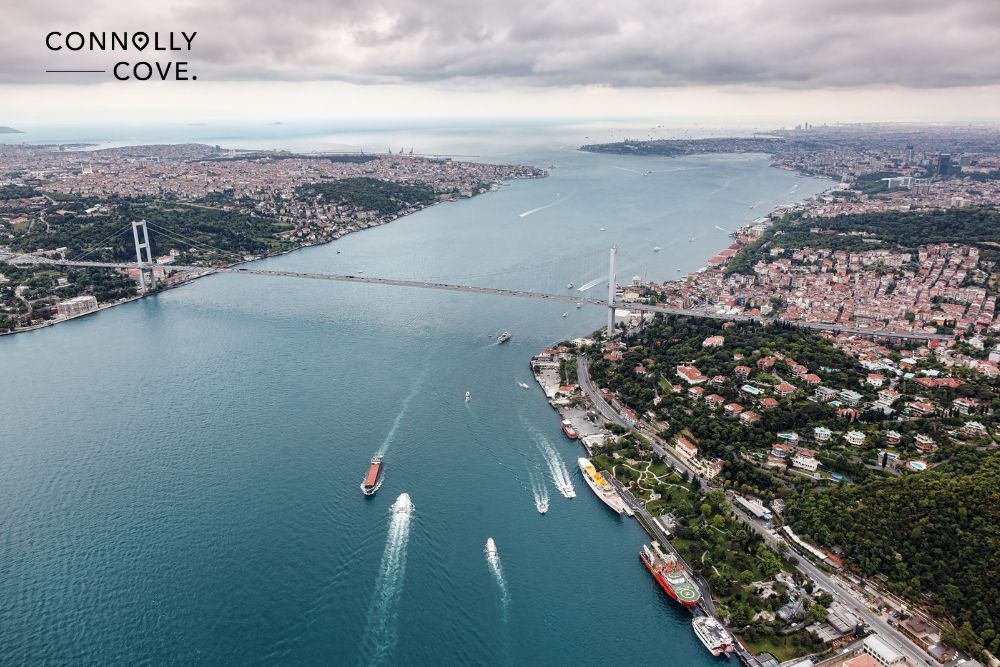
Palaces and Mansions Along the Bosphorus
The Bosphorus is jewelled with architectural marvels, including palaces and mansions that trace back centuries. These historic structures showcase the opulence and grandeur of different eras, with waterfront breathtaking views that have become synonymous with luxury and elegance. Exploring these palatial landmarks provides a glimpse into the rich history and architectural legacy that has drawn this essential strait’s cultural identity.
Let’s close more and learn about these landmarks!
1. Dolmabahçe Palace
Dolmabahce Palace, situated in the Beşiktaş district of Istanbul, is a marvellous Ottoman palace on the shores of the Bosphorus on the European side. Imagine a palace fit for a king, or rather, a sultan. This iconic palace was built in the 19th century by Sultan Abdulmecid, who commissioned it.
Stepping into Dolmabahçe Palace is like stepping into a glittering fairytale. Grand entryways adorned with obelisks and intricate tughras welcome you, while within, a symphony of Ottoman and European styles unfolds. Crystal chandeliers shimmer, gilded ceilings reflect sunlight, and opulent halls transport you to the height of Ottoman opulence.
This incredible, magnificent palace was the residence of almost six Ottoman Sultans and Ataturk until its death. Today, it’s a museum showcasing grand reception rooms, private chambers, and intricate gardens, offering a peek into the luxurious lives of sultans and the palace’s role in international diplomacy.
If you dream of a loyal life and want to try it with breathtaking views of this extraordinary strait, Dolmabahçe is your perfect place. So, don’t waste time and plan your dream trip.
2. Beylerbeyi Palace
The Beylerbeyi Palace is situated in the Beylerbeyi neighbourhood of Üsküdar district in Istanbul, on the Asian side of the Bosphorus. It’s one of the most awesome palaces with breathtaking views of this amazing strait. This palace was constructed to be a summer palace for the Sultans in the Ottoman era and a place to entertain visiting heads of state.
Beylerbeyi Palace, Nestled amidst lush greenery on this awesome water passage shore, this 19th-century retreat radiates charm and simplicity. Unlike Dolmabahçe’s opulent gold, Beylerbeyi’s wooden interiors whisper elegance with intricate marquetry and delicate Ottoman motifs. Panoramic Bosphorus views from every window add to the serene atmosphere.
Visitors can wander through the harem quarters, where sultanas enjoy tranquillity and admire the intricate tilework that adorns every chamber. Immerse yourself in the lush palace gardens, a fragrant maze of jasmine and cypress, before stepping onto the waterfront terrace for breathtaking Bosphorus vistas.
Don’t miss this chance to enjoy all the beauty and luxury of this iconic palace when you visit Türkiye.
3. Yıldız Palace
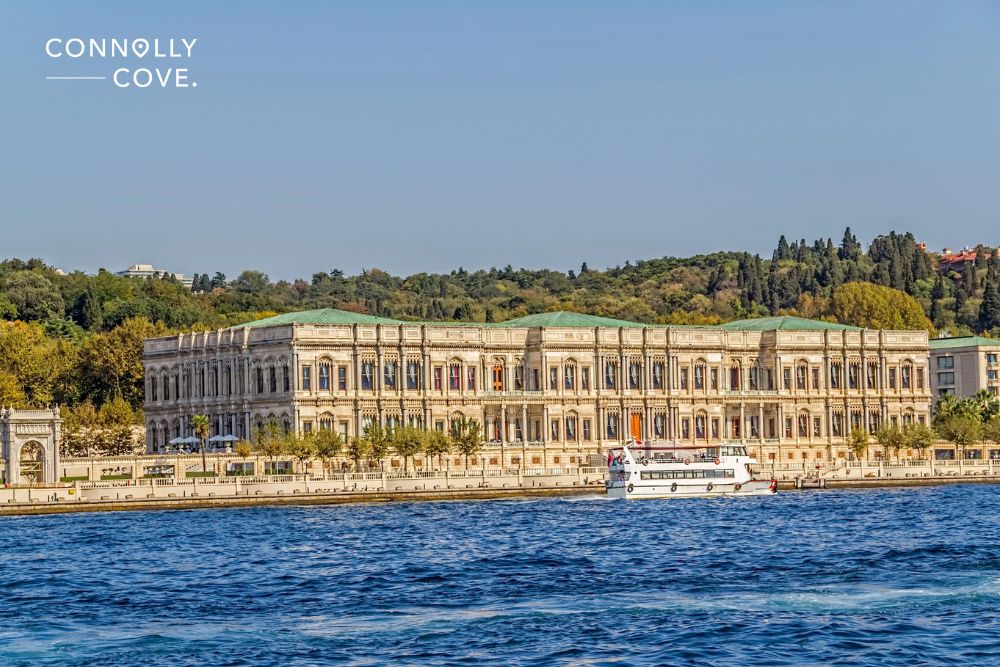
Yıldız Palace, which means “Star Palace“, is an enchanting Ottoman palace standing as evidence of the glorious Empire. It was the residence of Sultan Abdülhamid II for 33 years.
The palace complex, including an Ottoman palace and a stunning park with a stunning view of the Bosphorus, is one of Istanbul’s favourite spots. It was the fourth and the last palace complex of the Empire of the Ottoman. Its series of buildings, situated within the walled courts in an urban park, are used for various administrative, residential, and supportive functions. The Yıldız complex took its name after the 18th-century “Yıldız Pavilion” and was a countryside palace within a city.
In this masterpiece palace, history comes alive in every corner. Stand in the very spot where sultans surveyed their empire, marvel at the intricate tilework adorning the walls. More than just a palace, Yıldız is a sprawling complex perched atop a hill, offering breathtaking vistas of this breathtaking strait and the city below. From the opulent Mabeyn Mansion, where the sultan conducted state affairs, to the enchanting Şale Pavilion, with its European-inspired architecture, Yıldız showcases a captivating blend of styles.
Explore the imperial kitchens, wander through the vast gardens, and discover hidden gems like the Malta Pavilion, a whimsical wooden structure gifted by the Maltese Order.
4. Küçüksu Pavilion
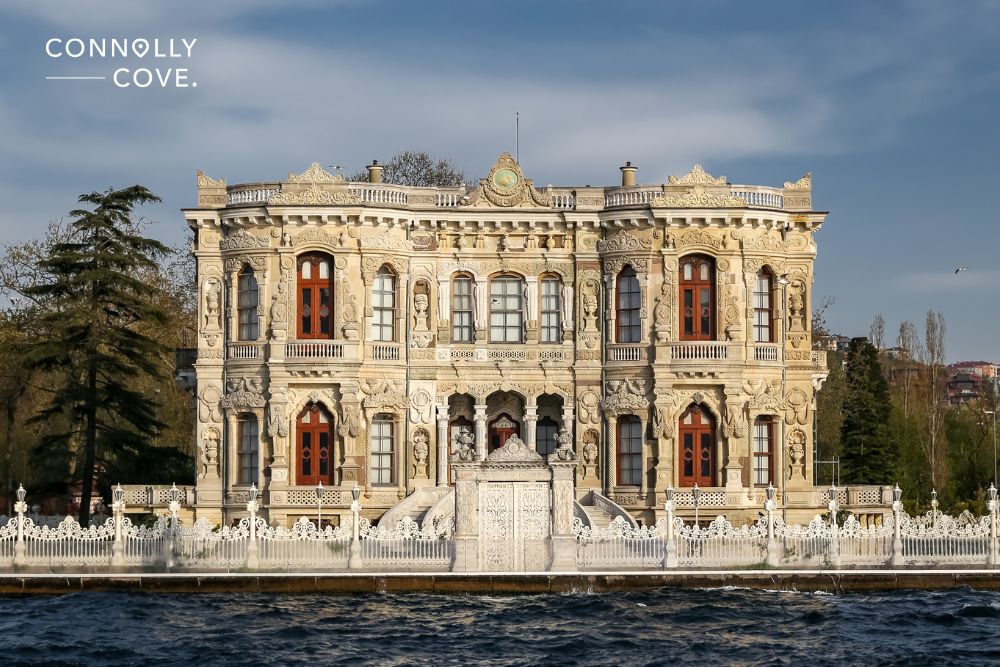
Located on the Asian shore of our incredible strait, Küçüksu Pavilion is quite small but is beautiful and opulent, just like the Dolmabahce and Beylerbeyi palaces. It was constructed during the Ottoman era and remained the glory of this period of Türkiye history.
Küçüksu Pavilion is situated in Istanbul, and it is a waterfront gem adorned with delicate rococo ornamentation. It was built in the 19th century as a hunting lodge for sultans. Its pastel-hued exterior, intricate tilework and serene gardens capture the essence of Ottoman leisure.
Today, Küçüksu Pavilion is open to the public as a museum and restaurant. The museum exhibits artefacts from the Ottoman Empire, including furniture, paintings, and textiles. The restaurant serves traditional Turkish cuisine with stunning views of the Bosphorus. Enjoy a traditional Turkish meal amidst history and marvel at the pavilion’s delicate beauty.
These are just a few of the many palaces and mansions that grace this stunning waterway shores. Each one tells a unique story, offering a window into Istanbul’s fascinating past. So, on your next visit, don’t just admire the breathtaking scenery; step ashore and explore these majestic structures. Uncover their hidden secrets, marvel at their architectural splendour, and experience the history that comes alive along the Bosphorus.
Bridges Connecting the European and Asian Sides
Spanning the majestic Bosphorus, Istanbul’s bridges aren’t just steel giants connecting two continents — they are arteries of modern life. These marvels of engineering unite Europe and Asia and symbolise Istanbul’s constant evolution and dynamic spirit.
Here’s a closer look at these impressive bridges:
- 15 July Martyrs Bridge (First Bosphorus Bridge): The pioneer, opened in 1973, it was once the world’s longest suspension bridge. Today, it carries around 200,000 vehicles daily, a testament to its enduring importance. It’s not just a bridge; it is one of the most popular tourist landmarks in Istanbul.
- Fatih Sultan Mehmet Bridge (Second Bosphorus Bridge): Built in 1988, it boasts a longer main span and higher towers, showcasing Türkiye’s advancements in engineering. Its eight-lane highway keeps traffic flowing between the continents.
- Yavuz Sultan Selim Bridge (Third Bosphorus Bridge): The newest addition, opened in 2016, stands as a technological marvel. Its record-breaking main span and railway line make it a crucial transportation hub and a symbol of Turkish ambition.
These bridges, with their sleek lines and impressive technical feats, are more than just infrastructure. They are vibrant testaments to human ingenuity, connecting not just landmasses but cultures, economies, and the very soul of Istanbul.
Last Words
The Bosphorus stands as Türkiye’s vital bridge between past and present, seamlessly blending geography, history, and culture. Whether you are a seasoned traveller or a first-time tourist, the Bosphorus has a way of leaving its mark, its magic lingering long after the last ferry fades from view.





